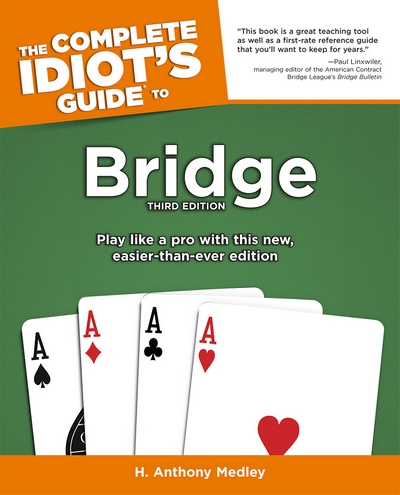| The first and second editions of Complete Idiot's Guide to Bridge by H. Anthony Medley comprised the fastest selling beginning bridge book, going through more than 10 printings. This updated Third Edition includes a detailed Guide to Bids and Responses, along with the most detailed, 12-page Glossary ever published, as well as examples to make learning the game even easier. Click book to order. Available in all bookstores and on Kindle. | ||
|
Sports Medley: The Truth about Bobby Thomson’s Home Run 27 Feb 17 by Tony Medley For more than six decades there have been rumors of nefarious deeds by Leo Durocher’s New York Giants in their run to the 1951 National League pennant. Richard Beverage tells the complete story in his December, 2016 issue of “Potpourri, The Newsletter of the Pacific Coast League Historical Society:” “The Giants were 13½ games behind the Brooklyn Dodgers in early August, 1951, but they caught the Dodgers as the regular season ended. A three game playoff series was necessary, the clubs split the first two games, and the final game at the Polo Grounds would determine the league champion. Each club scored a run early before the Dodgers took a 4-1 lead in the eighth inning. It appeared that Brooklyn would win, going into the last of the ninth. But two Giant hits and a double by Whitey Lockman put the tying run at second base with one out. Dodgers’ manager Charlie Dressen replaced starter Don Newcombe with Ralph Branca to pitch to Thomson. But the move backfired when Thomson hit Branca’s second pitch into the left field stands to give the Giants the pennant. “This scenario had a distinct PCL connection to it. In July the Giants acquired infielder Hank Schenz, who had played three games for the Angels in 1946 and would later play for Oakland and Sacramento. He had served in the Navy during the war and had acquired a powerful Wollensak telescope which he still had. When he joined the Giants, he suggested that the telescope could be used to read the opposing catcher’s signs from the center field clubhouse. The scheme worked, and the Giants developed an elaborate sign stealing procedure. Schenz manned the telescope, Herman Franks, a Giant coach who began his career at Hollywood in 1932, received the signs from Schenz and interpreted them, then passed the information to a Giant sitting on the bench in right field. That was usually substitute catcher Sal Yvars, who then flashed the pitch selection to the batter. The entire process took about 15 seconds. “The Giants began to use the system on July 21, and they began to win regularly. There is some uncertainty about how much the sign stealing scheme helped the hitters, but one thing is certain. Thomson was hitting .237 in late July, and for the balance of the season, he hit .358. “Needless to say, Branca was greatly affected by the home run. He blamed himself for not getting the pitch where he wanted it, and he took a lot of abuse from the Brooklyn fans. He had been one of the Dodgers’ best pitchers over the years, but a back injury had a major impact on his record. After an ineffective year in 1952 and not much better in 1953, the Dodgers sold him to Detroit in July of that year. “Branca was well liked by his Tiger teammates, and he was especially close to pitcher Ted Gray, who was his roommate on the road. Gray was a Michigan native, and that winter he met up with his old friend, Earl Rapp, in Detroit. It so happened that Rapp had played for the Giants for two months of the 1951 season. Rapp was well aware of the sign stealing scheme, and described it in detail to Gray. He said that the Giants used it right through the Thomson home run. Rapp was unaware that Gray and Branca were close. When the two men began the 1954 season, Gray told his roommate everything. It was the first that Branca knew about it, and he was devastated. “For many years Branca kept the knowledge to himself, but it simmered within him. He felt that the Giants had stolen the pennant, and one could certainly argue that point. Over the years he and Thomson became friends, but in truth he never got over it. A few years ago we met Branca and found him to be a very pleasant and charming man.” As a postscript to Beverage’s tale, Dressen had two pitchers warming up in the bullpen as Newcombe faltered, Branca and Carl Erskine, who had been the Dodgers’ opening day pitcher. Just before he called the bullpen, Erskine bounced several curve balls in the dirt, so pitching coach Clyde Sukeforth chose Branca to pitch to Thomson instead of Erskine, sending Ralph to his destiny of throwing the most famous home run pitch in baseball history.
|
||
